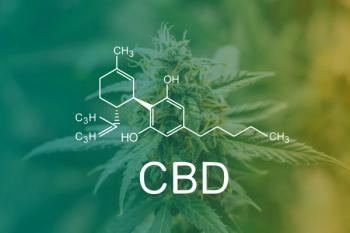
Cannabis Science and Technology
- November/December 2019
- Volume 2
- Issue 6
Beyond THC and CBD: Opportunities for Creating Pharmaceutical Targets
Commentary on how medicinal cannabis can evolve in a similar manner as the pharmaceutical industry did.
Taking a look back, we can see that the modern pharmaceutical industry evolved from more crude preparations and administration of natural product extracts. With consideration also given to what makes an effective therapeutic compound, it is interesting to think how the medicinal cannabis business will evolve through a similar lens.
The cannabis and hemp industries, a longtime taboo area at the never ending frontier of science, are now expanding at alarming rates. As we see individual states passing favorable legislation for medical and recreational cannabis, the Federal Farm Bill has opened the door for industrial hemp, and with it, a massive influx of cannabidiol (CBD) and CBD-infused products. While a large majority of these burgeoning business entities are pursuing extensive cultivation efforts to produce potent flower material and isolate products at a more expeditious and economical rate, perhaps there are other opportunities on the periphery that are worth investigating. This becomes more apparent if we look at the approach that the pharmaceutical industry took with natural products during its nascent stages; an approach that continues to produce blockbuster medicines today.
Prior to the evolution of the modern pharmaceutical industry, early biopharmacology involved the prehistoric use of plants, insects, animals, molds, and raw chemicals. Early healers understood that preparations and extracts of these materials had beneficial effects for people suffering from disease, or had psychological effects that were considered desirable. In the preindustrial age, these preparations contained a vast number of molecular components, which could cause unwanted effects including lethal toxicity. Many modern medicines are linked to these millennia-old remedies.
If we use the history of opium poppy (Papaver somniferum) as an example, we see that many elixirs were prepared by extraction with ethyl alcohol and water, and the cultivation of opium plants may be traced to Mesopotamia ca. 3400 B.C. Physicians in the 18th century recognized that use of the Papaver elixir had tonic effects on heart failure, asthma, and gastrointestinal illnesses. They also learned that attaining therapeutic doses of the underlying molecule required chronic consumption of morphine, which is the largest constituent of opium. Even then, this was considered deleterious.
In 1848, Georg Merck first separated and characterized Papaverine from opium. Papaverine is a benzylisoquinoline alkaloid and occurs naturally in opium at a concentration of 0.5%. Papaverine was rapidly recognized as beneficial for cardiac and pulmonary conditions. Demand for Papaverine rapidly outpaced the supply that could be obtained from biologic sources. This led to a quest to synthesize Papaverine from de novo sources. This synthesis was first successfully accomplished in 1879 and has had numerous improvements since then. The isolated molecule nonselectively relaxes smooth muscle in the body-smooth muscle being the only form of muscle in cardiac walls, blood vessels, pulmonary airways, and the wall of the intestines. Papaverine has a half-life of ca. 1 h. The use of oral preparations required that dosing be performed 6–10 times a day.
Subsequently, Verapamil was first synthesized in 1962, and while not a direct analogue of Papaverine, thermal degradation and methylation of the pyrrole ring of Papaverine gives the structure of Verapamil. Verapamil is also a calcium channel blocker. This is particularly significant given its tonic effects on smooth muscle and its primary use as an anti-arrhythmic. The take home point is that Verapamil was approved as an ethical drug and has produced more than $100 billion dollars in revenue since its approval.
Another example of drugs used for many centuries as a folk remedy is Digitoxin and Digoxin. Both are isolated from the flower of the Foxglove plant (Digitalis sp.). Digitoxin was used for heart failure and Digoxin continues to be used today, both for heart failure and as an anti-arrhythmic. Both are cardiac glycosides, which have extremely long half-lives: 3–5 days for Digoxin and 7–9 days for Digitoxin. Both molecules have very narrow therapeutic windows. The therapeutic dose and fatal dose of Digitoxin are almost identical. This has greatly limited the usefulness of either as a medicine.
Both Papaverine and Digitoxin illustrate the two ends of the spectrum of biopharmacologic efficacies using botanicals as medicine. One is too short, the other too long. To be a useful medication, a therapeutic agent should have a half-life in the body that allows for once or twice a day dosing, a therapeutic window that is wide, and minimal undesirable side effects relative to the primary action sought. However, knowing their structures and activities has led to a long-term and fruitful medicinal development of biologically inspired structures that improve human health.
Reviewing this history of bringing botanicals from anecdotal folk medicine through to science-based pharmaceuticals, we can expect the following as we take cannabis and hemp through the same journey. Initially, we should expect that any useful molecules may not be grown in sufficient quantities to fill the demand for an international market. Almost all of the molecules of interest that are present in cannabis and hemp (such as cannabinoids, terpenes, flavonoids), are expressed in exceedingly small quantities. Mendelian genetic manipulation is already being applied to amplify the concentrations of these constituents; however, laboratory genetic modification and chemical synthesis are also underway. The caveat with genetic modification is that this modality of increased production may also introduce or amplify compounds that interfere, inhibit, or produce side effects in a full-spectrum product, or they may delete compounds that are necessary for the full useful effect. Similarly, the production of individual cannabis and hemp-based compounds through chemical synthesis may produce products of limited therapeutic value.
This is in fact a major point of contention in the cannabis and hemp sectors. Anecdotal evidence already suggests that isolated use of either tetrahydrocannabinol (THC) or CBD does not match the beneficial effects of total extracts from cannabis and hemp. While the use of full-spectrum cannabis and hemp products is widely accepted, we can expect upon possible federal legalization that the pharmaceutical industry will apply regulatory and industry pressure to pursue only isolated molecules or their derivatives. In any eventuality, it is highly likely that newly isolated molecules will require chemical modification. The botanical molecule may have issues with biologic half life, target selectivity, or toxicity that limits or eliminates its use as a medication. Chemically modified analogues of cannabis derived molecules can produce a new species that overcomes these limitations. Regardless, investigation of purified molecules found naturally in cannabis and hemp are likely to indicate potential receptors that could be targeted through rational drug design, in which modifications to botanical progenitors lead to new avenues of clinical care.
The cannabis and hemp industries are in the midst of massive changes allowing for new frontiers in science to be more fully explored. Two things will limit the opportunity for medical advancement and discovery using cannabinoids, terpenes, and flavonoids: capitalization of that research and regulatory push back from U.S. federal authorities. As of this writing, the U.S. Food and Drug Administration (FDA) has issued three cease and desist letters for making false and unsubstantiated medical claims regarding the use of cannabinoids and it appears that there will be a fourth coming. Regulatory limits and possibly outright bans on the use of CBD as an additive and adulterant in multiple products are possible. Given the history of the FDA, we should expect that there will be an upcoming battle on the use of hemp and cannabis as nutraceuticals. The FDA may begin pushing for research into cannabis and hemp for use as ethical medications, while limiting or banning their use as nutraceuticals. Only those who have started down the path of doing basic research into the safety and efficacy of cannabis and hemp, from the testing of isolated molecules and their modes of action through structured patient clinical trials, will survive.
About the Authors
Frank W. Foss Jr. and Kevin A. Schug are with the Department of Chemistry and Biochemistry at The University of Texas at Arlington, in Arlington, Texas. Direct correspondence to:
How to Cite this Article
F.W. Foss Jr. and K.A. Schug, Cannabis Science and Technology2(6), 62-64 (2019).
Articles in this issue
about 6 years ago
GC-TOF Discovery-Based Profiling of CBD Oil Pet Supplementsabout 6 years ago
Smart HVAC Selection for Successful Cannabis Cultivationabout 6 years ago
Beyond Potency: Fungi, Mold, and Mycotoxinsabout 6 years ago
Spectroscopy Versus Chromatography for Potency Analysisabout 6 years ago
Cannabis and Kids: How Two Moms Use Cannabis to Treat Their ChildrenNewsletter
Unlock the latest breakthroughs in cannabis science—subscribe now to get expert insights, research, and industry updates delivered to your inbox.




